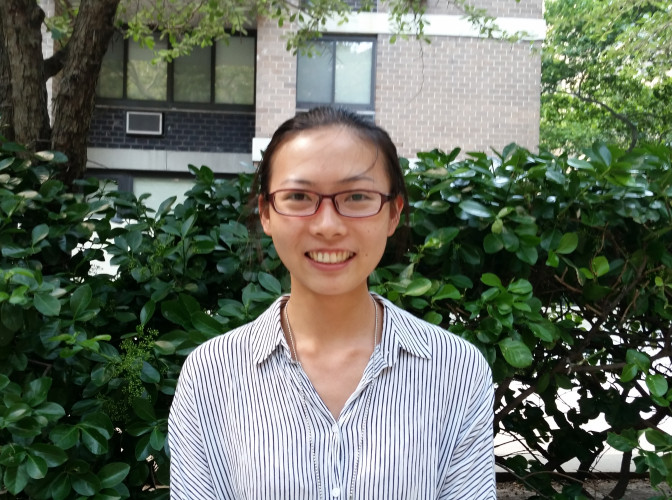Special Projects Intern: Yating Ru

Yating Ru is one of two students from Cornell University who conducted an Observational Survey of the New Springville Greenway this summer. Along with Saumitra Sinha, she developed and implemented a Greenway usage survey to better understand how Freshkills Park’s 3.2 mile New Springville Greenway is providing more opportunities for transportation and recreation and how the community is embracing those options.
What is your name and title?
Hi, my name is Yating Ru. It is my great pleasure to work as a Special Projects Intern with Freshkills Park team, a passionate and efficient team.
What are you working on?
I am currently working on follow-up research on two projects – Owl Hollow Soccer Fields and the New Springville Greenway. Owl Hollow Soccer Fields was completed in April 2013 and has been open to the public since then. It is a popular site for recreation as well as professional soccer training. The New Springville Greenway was completed recently and is located along the eastern edge of Freshkills Park and the eight-lane arterial roadway, Richmond Avenue. The 3.2-mile greenway creates pleasant environment for pedestrians and bicyclists, encouraging healthy and environmentally friendly alternatives for commuting and recreation.
I am working with another intern, Saumitra Sinha, to investigate the environmental impact of these two projects with a special focus on public space and life quality. We are developing methodologies to employ a combination of observation survey, questionnaire survey and existing data to examine and quantify the impact. We will look at the demographic characteristics of users such as gender, age, ethnicity and neighborhood, along with their activity characteristics, such as frequency and purpose. The methodologies could be used to guide the examination over the time and we will use them to finish data collection and data analysis for the first phase.
What drew you to Freshkills Park?
I am fascinated by the advanced idea of transforming what was once the largest landfill in the world into a significant ecological park. The land, where we live on and grow food, is scarce resources and is becoming less and less available for human beings. In the meantime, pollution exacerbates the problem by jeopardizing the environment and lowering its bearing capacity. Thus, land reclamation of brownfields is becoming an increasingly important task that most cities in the world have to deal with. Freshkills Park is a great model of reclaiming brownfields through employment of cutting-edge ecological restoration techniques. As my study at Cornell University is focused on environmental planning and sustainable development, it is an exciting opportunity for me to join the Freshkills Park Development Team and make my contribution to this landmark park.
What’s one way to send less waste to landfills?
From my perspective, everyone has a role in sending less waste to landfills. Efforts begin with garbage classification. Accurate classification significantly reduces landfill volume through separating out reusable and recyclable garbage, such as papers, bottles and so on. In addition, after classification, we can target different components of garbage and reduce more efficiently. For non-reusable and non-recyclable components, such as food, the best way to cut down the amount is to purchase less and throw away less. For reusable components, such as old clothes, we can donate them and help people in need instead of adding burden to landfills. For recycling components, such as papers, we can support the process through not only recycling more but also buying more products made from recycled materials.
Favorite color?
My favorite color is deep ocean blue. It is a peaceful and tranquil color. The ocean is where life originates and its color has this mysterious power.




